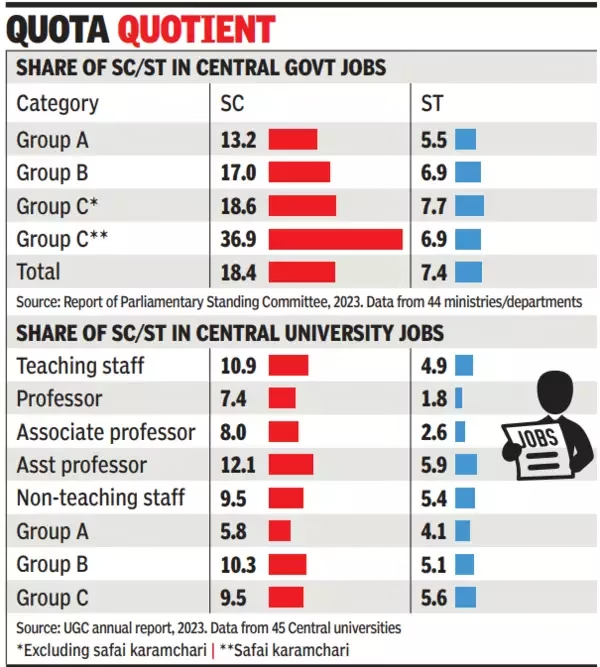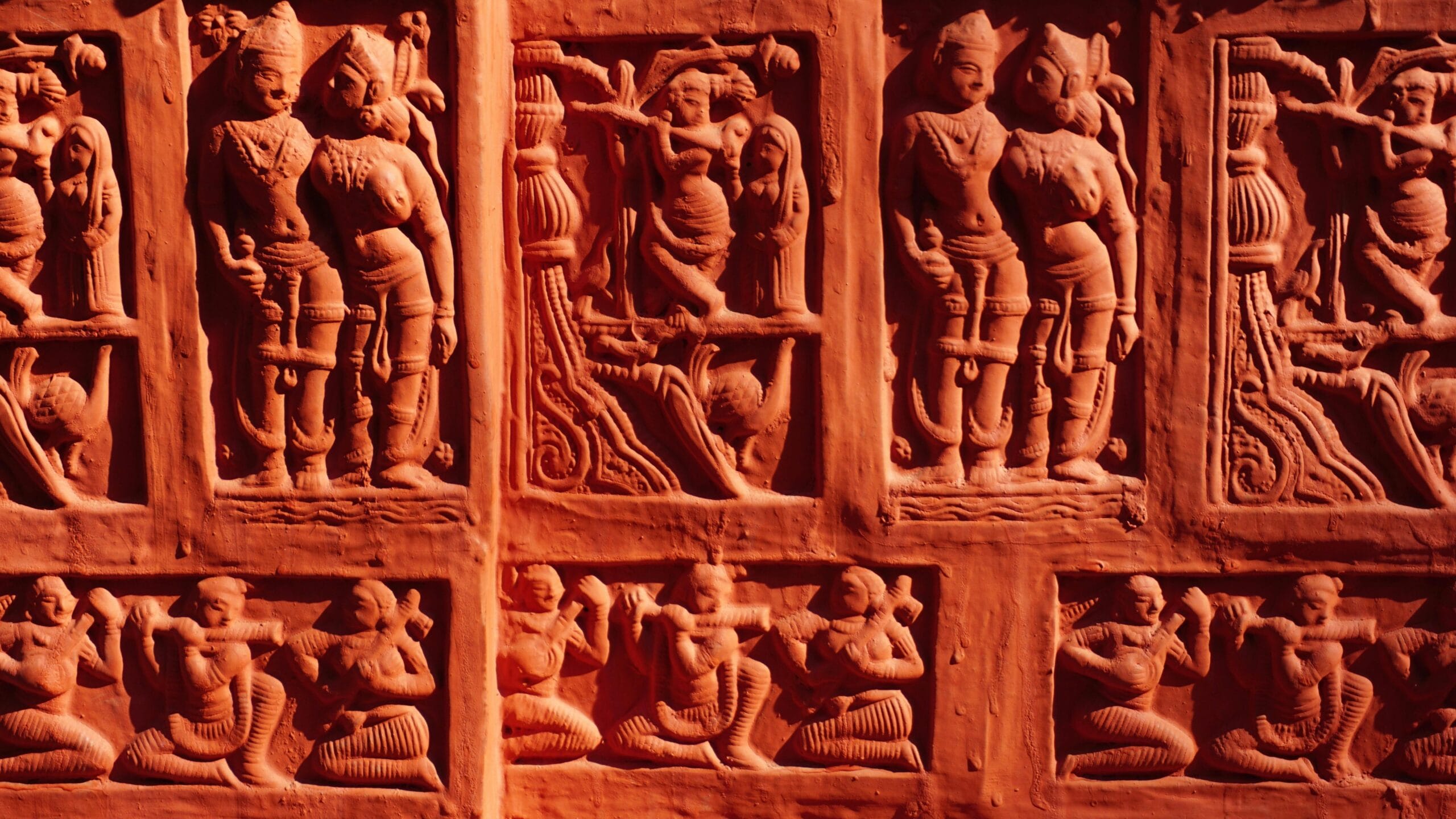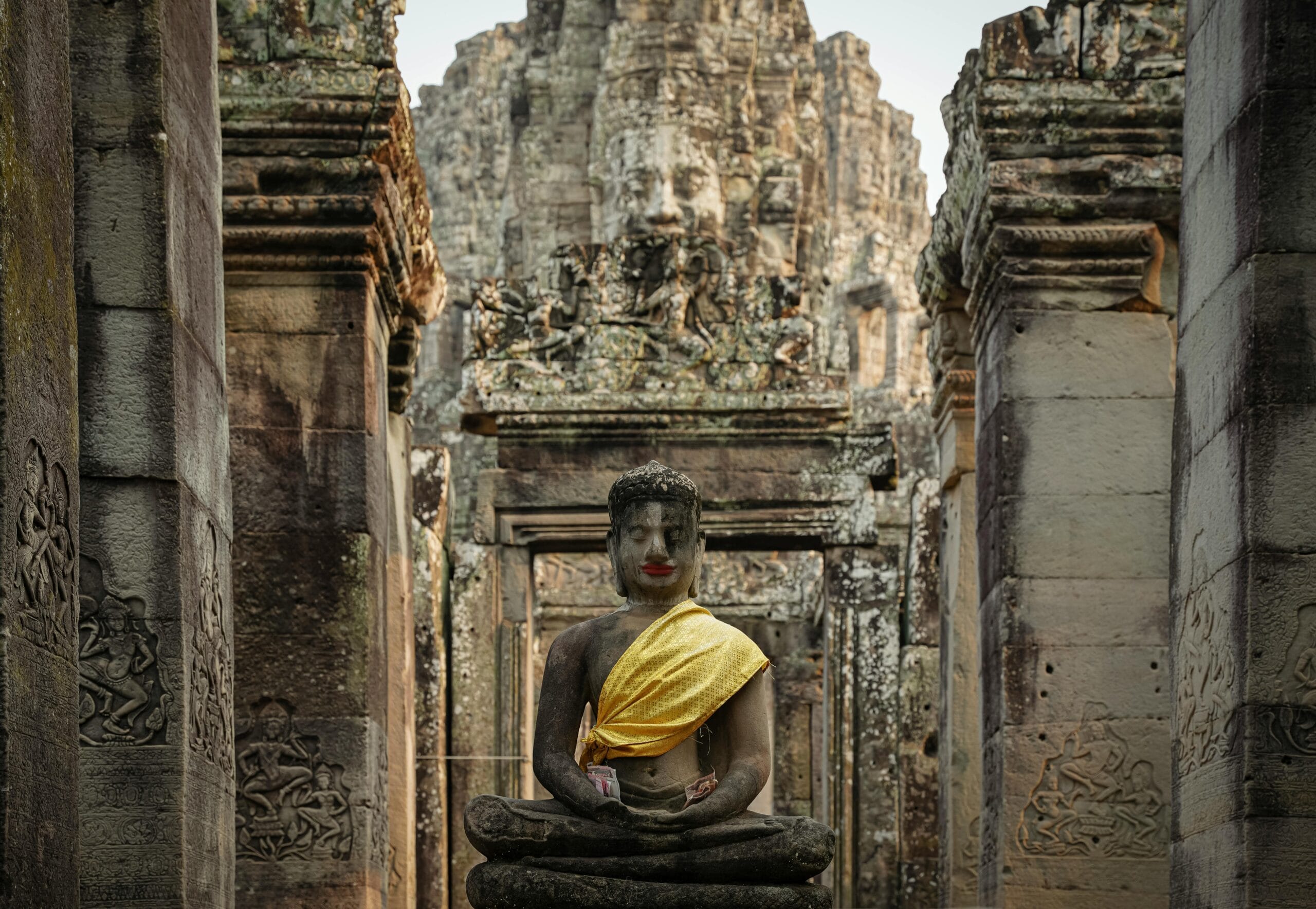The Supreme Court’s decision concerning the categorisation of reservations has sparked significant debate, particularly regarding its potential impact on the Bahujan community. This article delves into the complexities of this verdict, focusing on the introduction of the ‘creamy layer in SC/ST’ reservations—a principle already in practice for OBCs. We aim to dissect the implications of this decision, question its justifications, and explore the potential ramifications for social justice and equality.
Table of Contents:
- 1. Understanding the Supreme Court's Stance on the Creamy Layer in SC/ST
- 2. The Historical Context: A Brahmanical Conspiracy?
- 3. Unpacking the Arguments: Justice Mittal's Perspective on Creamy Layer in SC/ST
- 4. Questioning the Data: Have SC/ST Communities Really Benefitted?
- 5. Understanding Participation of the Bahujan Samaj
- 6. Key Questions on the Creamy Layer Principle
- 7. The Role of Judiciary & Artificial Scenarios
- 8. Reconsidering the Reservation System
- 9. What can you do?
1. Understanding the Supreme Court’s Stance on the Creamy Layer in SC/ST
1.1. The Core Argument
The Supreme Court’s rationale behind advocating for a creamy layer within SC/ST reservations stems from the notion of economic and social progress. The court suggests that individuals who have attained a certain level of economic and social advancement should be excluded from availing of reservation benefits. This perspective, however, raises fundamental questions because historical injustices and social discrimination, rather than purely economic factors, underlie the very basis of SC/ST reservations.
1.2. Justice Gavai’s Emphasis
Justice Gavai played a key role in emphasising the implementation of a creamy layer within SC/ST reservations, drawing parallels with the existing system for OBCs. He suggested the formulation of specific criteria to identify individuals who have surpassed a certain economic threshold, thereby disqualifying them from reservation benefits.
However, the feasibility and fairness of applying economic criteria to a community that has historically faced systemic discrimination remain contentious.
1.3. The Flaw in Economic Criteria
The Supreme Court’s focus on economic progress as a determinant for reservation eligibility overlooks the deep-seated social barriers and historical injustices that continue to plague SC/ST communities.
Even if individuals from these communities achieve economic success, they may still be subjected to caste-based discrimination and social stigma, thereby undermining the very notion of equality and social justice.
2. The Historical Context: A Brahmanical Conspiracy?
2.1. The 2012 Conspiracy
The concept of creamy layer in SC/ST reservations is not new. Since 2012, certain groups have advocated for its implementation, framing it as a means to ensure equitable distribution of reservation benefits. However, critics argue that a Brahmanical agenda drives this push, aiming to fragment SC/ST communities and undermine their collective strength. This historical context adds a layer of complexity to the debate, raising questions about the motivations and vested interests behind the creamy layer proposal.
2.2. Supreme Court’s Previous Stance
It’s important to note that the Supreme Court previously directed the government to implement a creamy layer system in promotions. However, the government has resisted such directives, recognizing the potential for further marginalization of SC/ST communities.
This historical context underscores the ongoing tension between judicial pronouncements and governmental policies, highlighting the need for a nuanced understanding of the issue.
2.3. The Real Beneficiaries
The question arises: Who truly benefits from the fragmentation of SC/ST reservations? Critics argue that the creamy layer concept primarily serves the interests of dominant castes by creating divisions within marginalized communities and weakening their collective bargaining power. By excluding economically advanced individuals from reservation benefits, the creamy layer system may inadvertently reinforce existing social hierarchies and perpetuate inequality.
3. Unpacking the Arguments: Justice Mittal’s Perspective on Creamy Layer in SC/ST
3.1. Questionable Comparisons
Justice Mittal introduced a controversial criterion for determining the creamy layer, suggesting that a student attending an elite institution like St. Stephen’s College should not be considered equal to a student studying in a rural school or college. This comparison, however, overlooks the systemic disadvantages that SC/ST students face, regardless of their educational institution.
3.2. The Reality of Representation
Critics question the relevance of Justice Mittal’s comparison, citing the negligible number of SC/ST students attending elite institutions like St. Stephen’s College. They argue that focusing on such isolated cases distracts from the larger issue of systemic underrepresentation and historical marginalization that SC/ST communities face. Furthermore, they emphasize the need to address the underlying barriers that prevent SC/ST students from accessing quality education and opportunities.
3.3. A Flawed Argument
The comparison between students attending elite and rural institutions is not only statistically insignificant but also conceptually flawed. It fails to account for the unique challenges that SC/ST students face, such as caste-based discrimination, lack of access to resources, and cultural barriers. Moreover, it overlooks the need for affirmative action policies to address these systemic disadvantages and promote social inclusion.
4. Questioning the Data: Have SC/ST Communities Really Benefitted?
4.1. Vacant Posts
The stark reality of vacant government posts further undermines the notion of a ‘creamy layer’ within SC/ST communities. Data reveals that a significant number of positions reserved for SC/ST candidates remain unfilled, raising questions about the claim that these communities have excessively benefited from reservations. Even govt states the number of unfilled vacancies of SC/ST/OBC. If a substantial number of reserved posts are lying vacant, how can one justify the exclusion of economically advanced individuals based on the assumption of over-representation?
4.2. Skewed Representation
Even within the limited representation of SC/ST communities in government jobs, there is a skewed distribution across different levels. While SC/ST individuals may be adequately represented in lower-level positions, their presence in higher-level decision-making roles remains woefully inadequate.

This skewed representation raises concerns about the effectiveness of reservation policies in promoting true social inclusion and empowerment.
4.3. Under-Representation in Higher Posts
Data reveals a concerning trend: as one progresses up the hierarchy of government jobs, the representation of SC/ST communities steadily declines, as shown in the above image.
This phenomenon underscores the existence of systemic barriers that prevent SC/ST individuals from accessing leadership positions and decision-making roles. These barriers may include caste-based discrimination, lack of access to mentorship and networking opportunities, and biased evaluation criteria.
Therefore, the following section will address the role of the Bahujan Samaj
5. Understanding Participation of the Bahujan Samaj
5.1 Lack of Participation
The issue of limited participation extends beyond government jobs and into other spheres of society, such as banking and public sector units (PSUs). Reports indicate that SC/ST communities are severely underrepresented in the decision-making bodies of these institutions, highlighting the systemic exclusion and marginalization they face.
5.2 Where decisions are made
This lack of representation has far-reaching consequences, because it deprives SC/ST communities of a voice in shaping policies and decisions that directly impact their lives. Without adequate representation, their concerns and perspectives may be overlooked, leading to further marginalization and exclusion.
5.3 Importance of Representation
Inclusive decision-making processes need to ensure the participation of all marginalized communities. By amplifying the voices of those who have been historically silenced, societies can create more equitable and just systems that address the needs of all citizens. This requires a concerted effort to dismantle systemic barriers, promote social inclusion, and foster a culture of respect and understanding.
6. Key Questions on the Creamy Layer Principle
6.1. What Happens to Those Excluded?
One of the most pressing questions surrounding the creamy layer principle is the fate of individuals that it excludes from reservation benefits. Do they automatically transition into the ‘savarna‘ category, shedding their caste identity and experiencing the privileges associated with it? Or do they remain marginalized, facing discrimination and social stigma despite their economic progress?
6.2. Do They Become Savarnas?
The reality is that individuals excluded from reservation benefits often continue to face caste-based discrimination and social stigma, regardless of their economic status. They may be denied access to housing, employment, and other opportunities due to their caste identity, highlighting the limitations of economic criteria in addressing deep-seated social inequalities.
6.3. The Fundamental Question
The fundamental question, then, is whether the creamy layer principle truly promotes social justice and equality, or whether it simply reinforces existing social hierarchies and perpetuates discrimination. By excluding economically advanced individuals from reservation benefits, the creamy layer system may inadvertently undermine the very goals it seeks to achieve.
7. The Role of Judiciary & Artificial Scenarios
7.1 Contradictory Judgements
It highlights the artificial nature of the 50% limit set by the judiciary for SC/ST/OBC reservations. This limit creates a situation where one SC caste is pitted against another, rather than focusing on the historical advantages enjoyed by the dominant castes.
7.2 Is There An Alternative Solution?
If the court is truly concerned about the more disadvantaged groups, it could increase the reservation limit beyond 50%. This would allow for additional reservations for the most marginalized without taking away from existing reservations.
7.3 No Upper Limit
There is no upper limit and it says the reservation is essential. These reservations in total must exceed at least 50% for the Bahujan samaj so that a system sets up for the current day scenario.
8. Reconsidering the Reservation System
8.1 Flaws in Judiciary Decisions
The critics argue that the reservation system Dr. Ambedkar created has no inherent problems. All issues result from court decisions that have artificially interfered with the system.
8.2 System Flaws
They emphasise that the system Dr. Ambedkar established was open-ended, without any limits. But, the Brahmanical society added rules to make the system complicated.
8.3 Artificial and Real Division
Today, conflicts have arisen due to judicially created barriers. Critics state it as artificial. There is no problem in the Constitution; it all comes from judges.
9. What can you do?
In light of the complexities surrounding reservation policies and the creamy layer concept, it is imperative for individuals and communities to take proactive steps to promote social justice and equality. Here are some actionable strategies that can be employed:
- Advocate for Policy Changes: Engage with policymakers and advocate for reforms to reservation policies that prioritize social inclusion and empowerment. This may involve advocating for the removal of artificial barriers, such as the 50% limit on reservations, and promoting affirmative action measures that address systemic disadvantages.
- Promote Awareness: Raise awareness about the systemic barriers and historical injustices that marginalized communities face. This can be achieved through education, outreach programs, and advocacy campaigns that challenge discriminatory attitudes and promote empathy and understanding.
- Support Community Initiatives: Support grassroots initiatives that empower marginalized communities and promote social mobility. This may involve providing resources and mentorship to aspiring students, supporting community-based organizations that address social and economic disparities, and advocating for policies that promote equal access to opportunities.
- Challenge Discrimination: Actively challenge discrimination and prejudice in all its forms. This may involve speaking out against discriminatory practices, reporting instances of caste-based discrimination, and promoting diversity and inclusion in workplaces, educational institutions, and other spheres of society.
By taking these proactive steps, individuals and communities can contribute to the creation of a more just and equitable society where all citizens have the opportunity to thrive.
What can you do next? Stay informed about the progress of SC/ST/OBC communities, engage in meaningful discussions and debates and challenge systemic discrimination. Support organizations working towards creating a more equitable and just society. Together, we can make a difference.
Disclaimer:
- Reservation: A system of affirmative action providing seats in government jobs and educational institutions for backward classes.
- Creamy Layer: A concept used to exclude economically advanced sections of OBCs from reservation benefits.
- Sub-categorisation: Dividing reserved categories into sub-groups to ensure equitable distribution of benefits.
- Bahujan: A collective term referring to Scheduled Castes, Scheduled Tribes, and Other Backward Classes.
- Savarna: A term referring to the upper castes in the Hindu caste system.
Read more about the EWS Scam in India.
Read more about how casteism is leading to corruption.
Do you disagree with this article? If you have strong evidence to back up your claims, we invite you to join our live debates every Sunday, Tuesday, and Thursday on YouTube. Let’s engage in a respectful, evidence-based discussion to uncover the truth. Watch the latest debate on this topic below and share your perspective!

